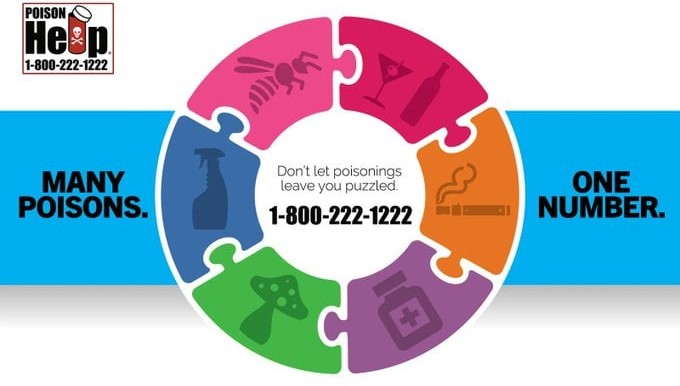Is it time to confront the horrors we allow to occur?
By
Thom Hartmann for the Independent Media Institute
:quality(70)/d1hfln2sfez66z.cloudfront.net/03-28-2023/t_98235e4cdd5e4b2f8fd92b6293962910_name_TN_SCHOOL_SHOOTING_frame_1277.png) |
| Here is surveillance video of the Nashville shooting just before opening fire. |
EDITOR'S NOTE: Before we get into Thom's astute commentary, I have excerpted from a Vox interview with Dr. Chethan Sathya, a pediatric trauma surgeon and the director of Northwell Health’s Center for Gun Violence Prevention who talks about his experience in treating children for gunshot wounds. His descriptions may be disturbing to some readers. - Will ColletteRead Vox's entire interview HERE.
What’s it like to treat children for gunshot wounds?
I’m part of a trauma team. It’s like 30 people in one room, all waiting and ready for a patient. When it’s a kid coming in with a bullet wound, that room is silent. What’s this kid gonna look like? There’s all this emotion around it. It’s a very tense situation, and it’s way quieter than other trauma bays, because I think everybody is, at some level, scared. You never want to lose a life, but just having a child in front of you that has bullets in them and is bleeding out or could die — that’s a very traumatic thing.
The parents come into the trauma bay with us. So you’re dealing with a child with a bullet injury, and the parents are there. You can only imagine how traumatic a situation that is, and the immense horror on the faces of these parents.
You can’t help but reflect on your own kids. I’m a father myself. You start thinking about the fact that you don’t want to lose this child, and then you do everything you can to treat the injury. It’s a hard thing to grapple with. It doesn’t ever become easier.
What do bullets do to children’s bodies? Are there differences in terms of how they affect kids versus adults?
When it comes to children, people don’t understand: Everything, all their vital organs, the big blood vessels, they’re all that much closer together. And unlike with an adult, there’s no buffering from abdominal fat, or protection from muscles. When you look on the outside, you might just see a bullet hole. But when we, as surgeons, open up that child, we see the devastation on the inside. One bullet can cause catastrophic injury to organs, and in many cases, it’s stuff that we can’t even repair.
Most of us follow stories about community gun violence and school shootings in the news. We see the images of crying children, but we don’t see what you see — and most of us, I think, would rather not think about what guns really do to kids. What’s one thing you really want readers to know?
Sometimes people say it’s about the individual, not the gun, right? But it is about the gun. The amount of destruction that guns cause is devastating. I invite anybody who doesn’t believe that to come in and see firsthand. Think about your own family members. Would you rather have them have a knife injury? Or would you rather them have gun injuries from an assault weapon?
It’s kind of a no-brainer. The fact that that’s even debated is pretty ridiculous. These are weapons that can cause mass destruction and kill many people quickly. From an injury standpoint, the wounds from car injuries, and stab wounds are way less complex to deal with and way less lethal than gunshot injuries.
Can you say more about that?
When we see a patient who comes in with a stab wound, even multiple stab wounds, the chance that the blade actually pierces a vital organ or blood vessel is way less likely than with a bullet, because the bullet, when it enters the body, causes a significant thermal reaction and secondary effects — it creates a huge cavity of destruction. It’s not like a knife that just goes in and causes a cut in the area of concern. Don’t get me wrong: Knives, stab wounds, can be extremely lethal. They cause devastating injuries, too. But they’re definitely not one-for-one.
With that introduction, here is Thom Hartmann's take on what we need to do to get through to people how we must stop this insanity. - WC
And
now we have another mass school shooting, this time in Tennessee with three
9-year-old girls dead as well as 3 adults. Immediately followed by another
pathetic Republican congressman claiming that Congress can’t do a
thing.
A
community is grieving, schoolkids across America are terrified, and after 130
mass shootings in the first 87 days of this
year — 33 of them in schools and colleges — you’d think average Americans would
finally understand the horrors of the gun violence Republicans in Congress and
on the Supreme Court have inflicted on us.
This
is a phenomenon as systemic and unique to the United States today as Jim Crow
was in the 1950s. The gun control movement needs to learn from the Civil Rights
movement.
Back
in 1955, young Black people like 14-year-old Emmett Till were routinely
murdered by white people all over America, usually with no consequence
whatsoever.
Emmett
Till was kidnapped by two Mississippi white men, brutally tortured, murdered,
and his mangled body was thrown into the Tallahatchie River. (And the
white men who did it, and the white woman who set it off with a lie, never
suffered any consequence.)
His
mother, Mamie Bradley, made the extraordinarily brave decision to show her
child’s mutilated face with an open-coffin funeral in their hometown of
Chicago.
Jet
magazine ran a picture you can see here of Emmett,
which went viral, invigorating the Civil Rights movement as it horrified the
nation. As President Biden said last month, honoring the release of
the new movie Till:
“JET
magazine, the Chicago Defender and other Black
newspapers were unflinching and brave in sharing the story of Emmett Till and
searing it into the nation’s consciousness.”
That
picture made real the horrors of white violence against Black people in America
for those who were unfamiliar, or just unwilling, to confront it.
We’ve
all heard about Newtown and Stoneman Douglas and Las Vegas, but have you
ever seen pictures of the bodies mutilated by the .223 caliber bullets
that semi-automatic assault weapons like the AR15 fire?
The
odds are pretty close to zero; most Americans have no idea the kind of damage
such weapons of war can do to people, particularly children.
But
we need to learn.
In
the 1980s, egged on by partisans in the Reagan administration, America’s
antiabortion movement begin the practice of holding up graphic, bloody pictures
of aborted fetuses as part of their demonstrations and vigils.
Their
literature and magazines, and even some of their advertisements, often carry or
allude to these graphic images.
Those
in the movement will tell you that the decision to use these kinds of pictures
was a turning point, when “abortion became real“ for many Americans, and even
advocates of a woman’s right to choose an abortion started using phrases like
“legal, safe, and rare.“
Similarly,
when the Pulitzer Prize-winning photo of 9-year-old “Napalm Girl” Phan Thị Kim
Phúc running naked down a rural Vietnamese road after napalm caught her clothes
on fire was published in 1972, it helped finally turned the tide on the Vietnam
War.
Showing
pictures in American media of the result of a mass shooter’s slaughter would be
a controversial challenge.
There
are legitimate concerns about sensationalizing violence, about morbid
curiosity, about warping young minds and triggering PTSD for survivors of
violence.
And
yet, pictures convey reality in a way that words cannot. One of these days, the
parents of children murdered in a school shooting may make the same decision
Mamie Till did in 1955.
America’s era
of mass shootings kicked off on August 1, 1966 when Charles Whitman
murdered his mother and then climbed to the top of the clock tower at the
University of Texas and begin shooting.
The
vast majority of our mass killings, however, began during the Reagan/Bush
administrations following the 1984 San Ysidro, California McDonald’s massacre,
the Edmond, Oklahoma Post Office shooting of 1986, and the Luby’s Cafeteria
massacre in Killeen, Texas in 1991.
We’ve
become familiar with the names of the places, and sometimes the dates, but the
horror and pain of the torn and exploded bodies has escaped us.
It’s
time for America to confront the reality of gun violence. And all my years
working in the advertising business tell me that a graphic portrayal of the
consequences of their products is the greatest fear of America’s weapons
manufacturers and the NRA.
We
did it with tobacco and drunk driving back in the day, showing pictures of
people missing half their jaw or mangled and bloody car wreckage, and it
worked.
And
now there’s a student-led movement asking states to put a
check-box on driver’s licenses with the line:
“In
the event that I die from gun violence please publicize the photo of my death. #MyLastShot.”
This
isn’t, however, something that should just be tossed off, or thrown up on a
webpage.
Leadership
from multiple venues in American journalism — print, television, web-based
publications — should get together and decide what photos to release, how to
release them, and under what circumstances it could be done to provide maximum
impact and minimum trauma.
But
Americans must understand what’s really going on.
A
decade ago, President Obama put then-VP Joe Biden in charge of his gun task
force, and Joe Biden saw the pictures from school shootings back then.
Here’s
how The New York Times quoted then-Vice President Biden:
“‘Jill
and I are devastated. The feeling — I just can’t imagine how the families are
feeling,’ he said, at times struggling to find the right words.”
Obama
himself, after seeing the photos, broke into tears on national
television.
And
we appear to be tiptoeing up to the edge of doing exactly this. Yesterday’s
Washington Post featured an article about what happens when people are shot by
assault weapons and included this commentary:
“A
Texas Ranger speaks of bullets that ‘disintegrated’ a toddler’s skull.
“This
explains the lead poisoning that plagues survivors of the shooting in Sutherland
Springs, Tex.; David Colbath, 61, can scarcely stand or use his hands without
pain, and 25-year-old Morgan Workman probably can’t have a baby. It explains
the evisceration of small bodies such as that of Noah Pozner, 6, murdered at
Sandy Hook Elementary, and Peter Wang, 15, killed at Marjory Stoneman Douglas
High. The Post examined the way bullets broke inside of them — obliterating
Noah’s jaw and Peter’s skull, filling their chests with blood and leaving
behind gaping exit wounds.”
But
we need to go the next step and show the actual pictures for this truth about
the horror of gun violence to become widely known. Doing this will take
leadership.
And,
of course, there must be a Mamie Bradley: a parent, spouse or other relation
willing to allow the photos of their loved one to be used in this way.
In
1996 there was a horrific slaughter in Tasmania, Australia, by a shooter using
an AR15-style weapon, culminating a series of mass shootings that had plagued
that nation for over a decade.
While
the Australian media generally didn’t publish the photos, they were widely
circulated.
As
a result the Australian public was so repulsed that within a year
semi-automatic weapons in civilian hands were outlawed altogether, strict gun
control measures were put into place, and a gun-buyback program went into
effect that voluntarily took over 700,000 weapons out of circulation.
And
that was with John Howard as Prime Minister — a conservative who was as
hard-right as Ronald Reagan!
In
the first years after the laws took place, firearms-related deaths in Australia fell by well over 40%,
with suicides dropping by 77%. There have only been two mass killings in
the 27 years since then.
The
year 1996 was Australia’s Emmett Till moment.
America
needs ours.
Thom Hartmann is a talk-show host and the author of The Hidden History of Neoliberalism and more than 30+ other books in print. He is a writing fellow at the Independent Media Institute and his writings are archived at hartmannreport.com. This article was produced by Economy for All, a project of the Independent Media Institute.



.webp)



.webp)
:quality(70)/d1hfln2sfez66z.cloudfront.net/03-28-2023/t_98235e4cdd5e4b2f8fd92b6293962910_name_TN_SCHOOL_SHOOTING_frame_1277.png)















.webp)
